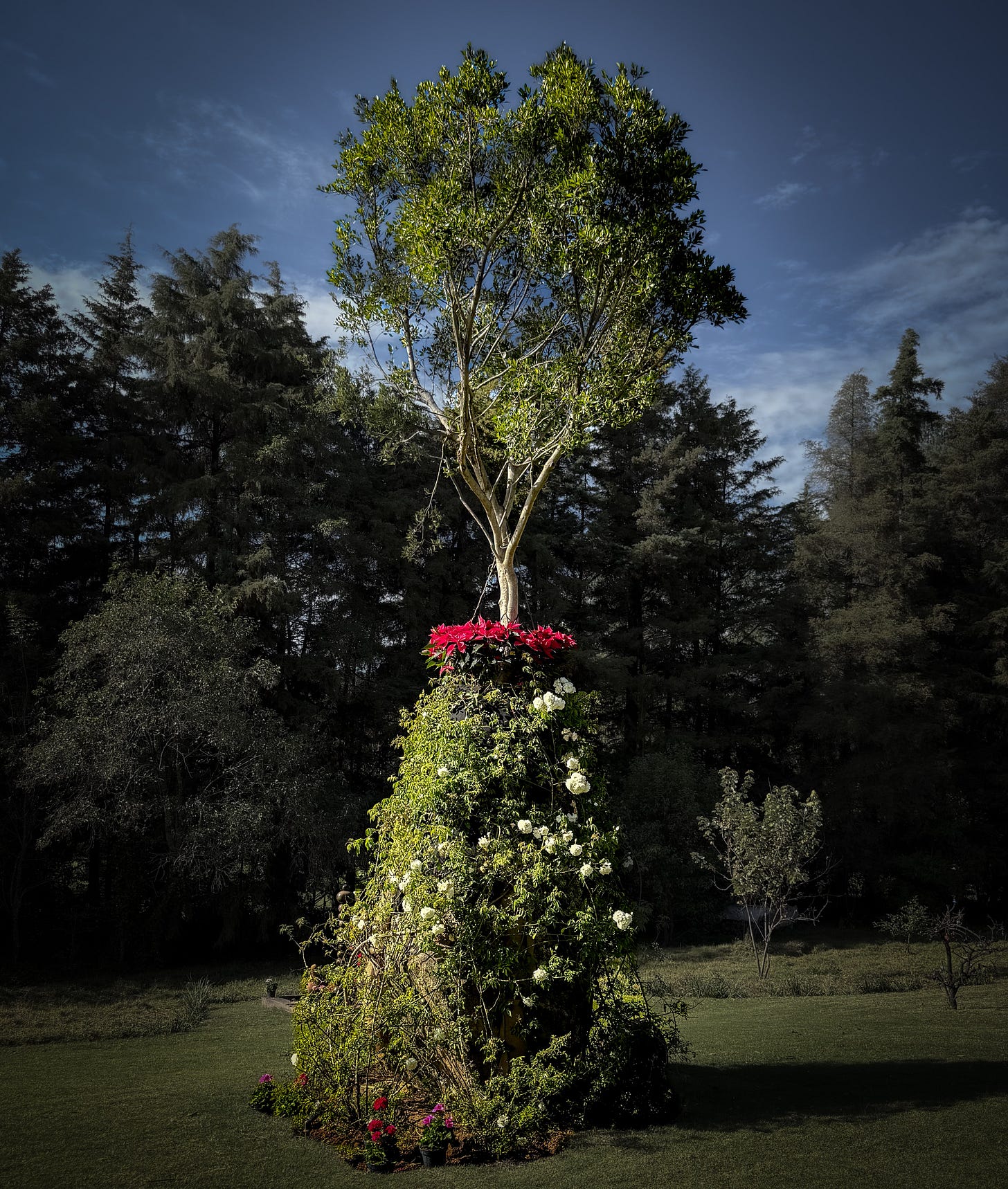
(NOTE: Large photos may require you to read the full contents of this post at Substack or in the app.)
All of my consciousness narrows down to something singular, calming, intense, as I make ever-so-slight shifts of position to the cold rock in my hand, trying to balance it atop another. My once disheveled stone wall along the back of my property, likely a vestige of a long-ago farmer’s pasture, has now sprouted a dozen or so small, balanced-rock “sculptures.” My dogs have watched me bemusedly, Charlie annoyed that I’m not throwing his toy consistently enough, so he finds he has to toss it ever closer to me, and occasionally he lets out a little yip of displeasure. Prudy has decided I’m giving far too much of my attention to these inanimate things, so she periodically pushes her nose into one just enough to send the stones toppling—then does a naughty little dance-away as I chastise her. She has found a way to make a game of it that involves her.
This all began with my recent trip to Mexico, where my wife lived from the ages of 8-18. It was her high school reunion for the small, British high school she and most of my now good friends there attended. I hadn’t been since 2019, and after a nightmare odyssey of a weather delay and missed connections, traveling as far as Phoenix even—two time zones away—we finally landed in the more than a mile-high, unfathomably vast Mexico City, Ubered to a good friend’s house, and crawled into bed—my clock reading 3:00 AM, the exact time it read when the alarm went off in Connecticut—and it dawned on me that with Mexico City an hour behind east-coast time, we had traveled for one full day (and one hour) to get here.
Travel delays and complications would soon become a theme of our too-short, five-day trip. Driving from the city out to the mountain town of Valle de Bravo for the first official reunion event would find our friend Patricio’s impossibly large Suburban lost on impossibly steep and narrow cobblestone streets, Google Maps doing us wrong, finally arriving over an hour late for the festivities.
The next day’s event was thankfully much easier, just a short walk down the road from our good friend Gustavo’s house, a place we have stayed innumerable times, so whenever we arrive there in the high mountains, chickens meandering through the courtyard, roosters calling out at all hours, the big, dark sky stretching above us, I almost feel as if I’ve returned home. On my first ever trip here in the mid-80s, his father, John, drove us in his jeep over terrible, rutted dirt roads (now a busy, smooth, paved road) to see the house half built, the adobe walls rising big adobe brick by big adobe brick, the surrounding mountains etched against the deep blue skies.
We are walking to where Gustavo’s brother, Juancho, has, since my last visit, built a retreat of his own on a chunk of what was once their parent’s property. As we unlatch his back gate and start to walk across what I’ve always known as merely a sheep pasture, we encounter our first stone sculpture, a fifteen-foot tall creature of balanced stones, which I later learn is named Pele, an homage to the Brazilian soccer legend (yes, that stone beneath one foot is meant to represent a soccer ball).
As we walk toward the main house (a cabin, really), I start to notice sculptures and small gardens, fountains and old stoves, potted, flowering plants, toy metal cars, woven baskets, archways, old frying pans built right into the sides of an adobe building, even a 1953 Cadillac with trees sprouting through its missing windshield…that the grounds of the property have been and continue to be carefully, purposefully crafted—with even the gateways to chicken coops and to Rodrigo the llama’s pasture and to the back pasture with donkeys who are more pets than livestock elegantly arched and lined with hedges, bougainvillea….
The party to follow—grilled specialties cooked by a local Uruguayan cook, wine, tequila, mezcal…reconnecting with many old friends, some, including Juancho, whom I hadn’t seen in decades—will surely become the subject of more writing, as reconnecting with and visiting Mexico is always a moving and important event for me. But for now, I just want to turn my attention to Juancho and wife, Doris’s place, to the way their artistic expressiveness permeates every inch of the property.
My wife and I (and many other party guests) couldn’t help but wander away from the main festivities to different corners of “Las Jacarandas,” the name he and Doris have given their ranch for the tunnel of jacarandas that line the main driveway. Everywhere you turn you find another balanced-stone sculpture, a lovely stone, wooden or metal bench, flowering shrubs, fountains…everything here bearing a unique, human signature, deep intentionality.
The only other times I’ve experienced anything quite like this was when we visited Salvador Dali’s house, now the Dali museum, in Port Lligat, Spain. There, you encounter his surrealist vision/mark at every turn—a giant, stuffed polar bear greets you just inside the main entry, mannequins and inflatable dolls dangle from ceilings, rows of Michelin men surround the pool, a huge sculpture of a man made out of old tires (which can only be seen in total from the roof of the house)—and on that roof, for no “reason,” a lovely, enormous egg. Or when we visited Louisiana, the modern art museum north of Copenhagen whose grounds house statues of Miro, massive mobiles, fantastic, polished stones…. There was also a hint of the prehistoric sites we visited last summer in Wales where care was often taken to align enormous stone structures with the light of the solstice—the exact placement of stones as deeply serious a matter for them as it clearly is for Juancho.
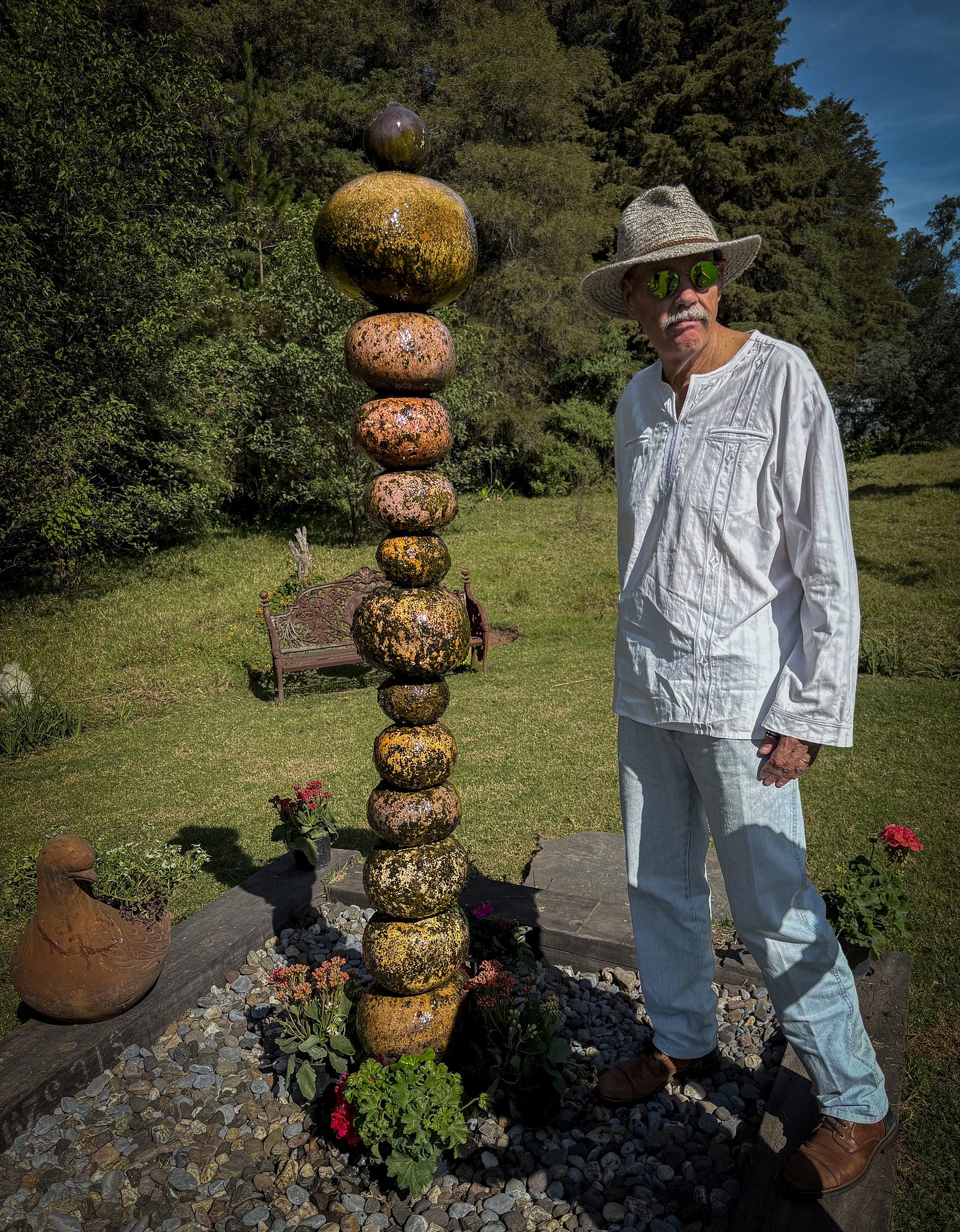
I was delighted when Juancho invited us over for coffee early the next day to get a guided tour of the property.
As we walked along in the chill of a high-altitude Mexican December morning, Juancho talked through what he was going for with each bench and tree and fountain and rock sculpture. “This was for my sister, Harriet,” he says, pausing and pointing toward a kind of rock wheel alongside large supports for several hammocks. She has battled and beaten breast cancer—and is another long-time friend (whom my daughter, Sofia, calls her second mom). Trees have been planted in “honor” of grandchildren, and there are some 30 benches throughout the property. Across from his “mother in law’s garden,” I was struck by a large sculpture he calls “The Cliffhanger.”
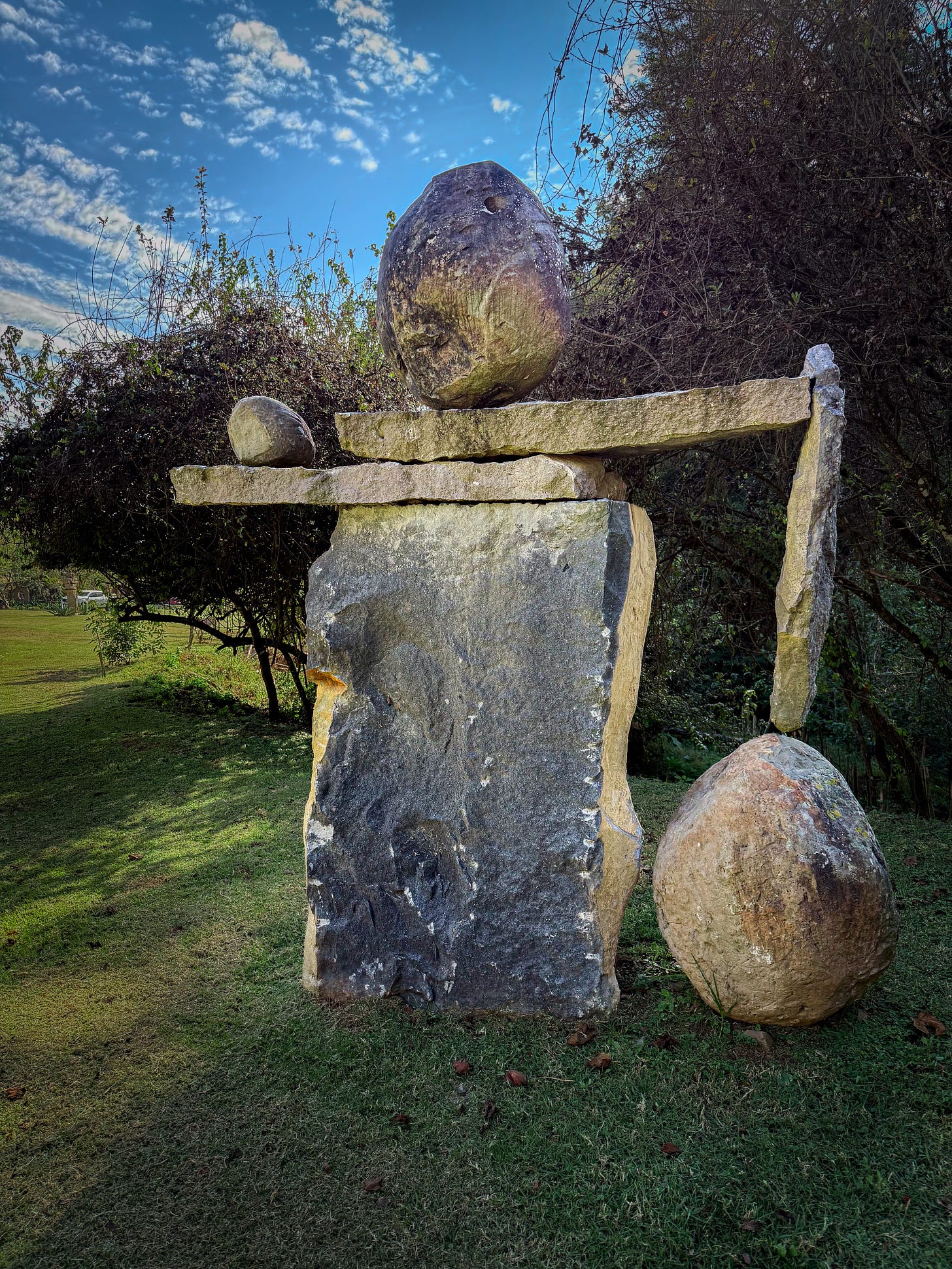
And just beyond this—after walking past a strangely lovely metal “tricycle”—which Juancho just found and knew he had to have, you pass through the circular archway to a small garden which was built to honor his parents, Gail and John—whom I knew all too shortly. The circular stone entryway is all balanced upon itself, and it took a great deal of effort to get the central topstone, made of obsidian, in place. Some of the stones are loose, and Juancho is planning to place “time capsules” within the wall, artifacts that were near and dear to his parents, like his father’s slide ruler.
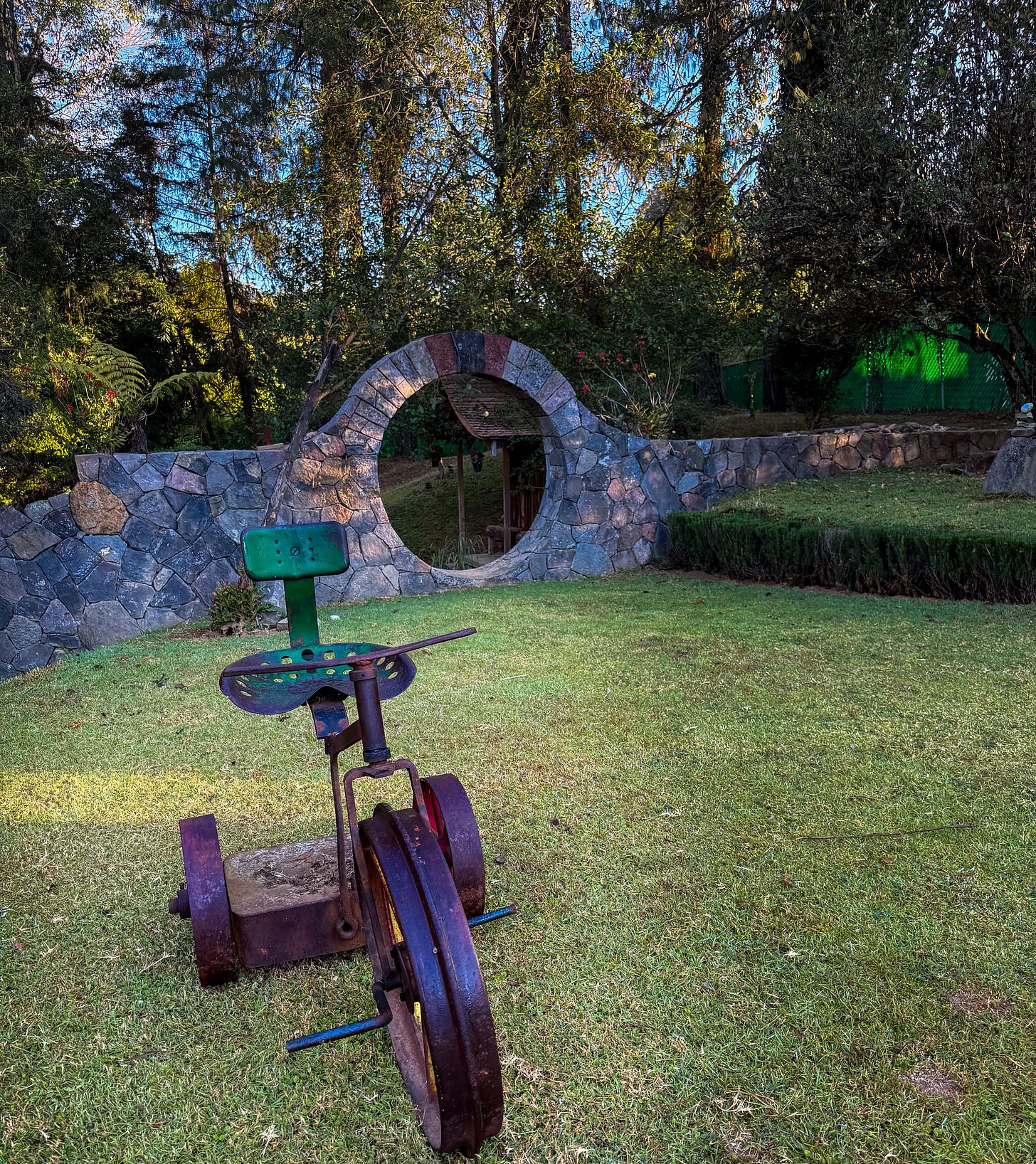
On one side of the wall/archway, stones have been attached to slim, metal poles to give the impression that the wall is coming apart and floating away, evoking a sense of impermanence and ephemerality despite its impressive heft. Another stone has been carved into the shape of a heart, and Juancho has begun training vines to grow there. He stresses that the vines will only grow across that one stone, the heart.
At the other end of the property, where he is building a small second house for visitors, children, grandchildren, he spent some time explaining a striking stone figure whose head seems to be a part of the house itself. It pays homage to his daughter in law, whose child faced a series of health struggles at birth. As Juancho describes it, “Days passed slowly and Lucas made little progress as news trickled in, ever so slowly. Given this, I set out to make a piece that would bear tribute to his mother, who no doubt had the burden of the heaviest weight.” The central figure represents her. She is holding one child, another child at her feet. And, since she is the “pillar of her family,” she is also now, figuratively (and nearly literally) the pillar holding up the house itself.
Nearby is a figure of a “pregnant” woman, a tribute to the birth of his grandson Mateo made three years earlier. Juancho is not as fond of this one, since he “cheated,” using invisible pins and epoxy, but I was still impressed….
Since we have only come into the property the back way, we have missed the hard work he put into the main driveway, lined with jacaranda trees that gives the ranch its name, its pebbles and shape meant to suggest a runway. At one end is a sculpture of stacked, round stones rising taller than me in the shape of a pyramid. He calls it “the gatekeeper,” and it was built to be in the direct line of site with another “gatekeeper” at the opposite end of the property. Clearly, it’s important to Juancho that these two creations are able to “see each other.” As we head back to the house, he points out a sculpture where he didn’t “cheat” at all—it is all carefully balanced and not attached in any other way. The donkeys and turkeys and peacocks (yes, of course there are peacocks) often bump against it and knock it over. “Come here,” he says, excitedly, “look at it from over here. Notice how it loses depth and almost seems two dimensional! Isn’t that cool.” The joy he takes from discussing his work is palpable.
Near the main cabin, which is itself another representational work, built from trees that he and Doris planted in these fields 40 years ago, is the central creation of the property—a tree magically growing atop a large boulder, covered in flowering vines (see the photo at the beginning of the post). This piece, “El Arbol Montado,” is for his wife, Doris, and as Juancho describes it: “I germinated a Ficus seed and planted it atop a 13 foot rock (the largest rock I’ve moved). It represents Doris and me—she being the rock, while I’m sprouting skyward from it. Five burlap ‘legs’ filled with rich soil extend downward toward the ground from the makeshift planter on the top, granting the root system of the growing tree easy growth downward. This was the first ‘art’ piece on the ranch, put in place as the cabin was being built. A jealous, territorial Vermillion Flycatcher has made his home in this iconic tree, and reminds me constantly of my late mother, as it was also her favorite bird. Doris made a pencil draft of these three elements (rock, tree, bird) and the resulting image is now the logo of our home in Acatitlan.”
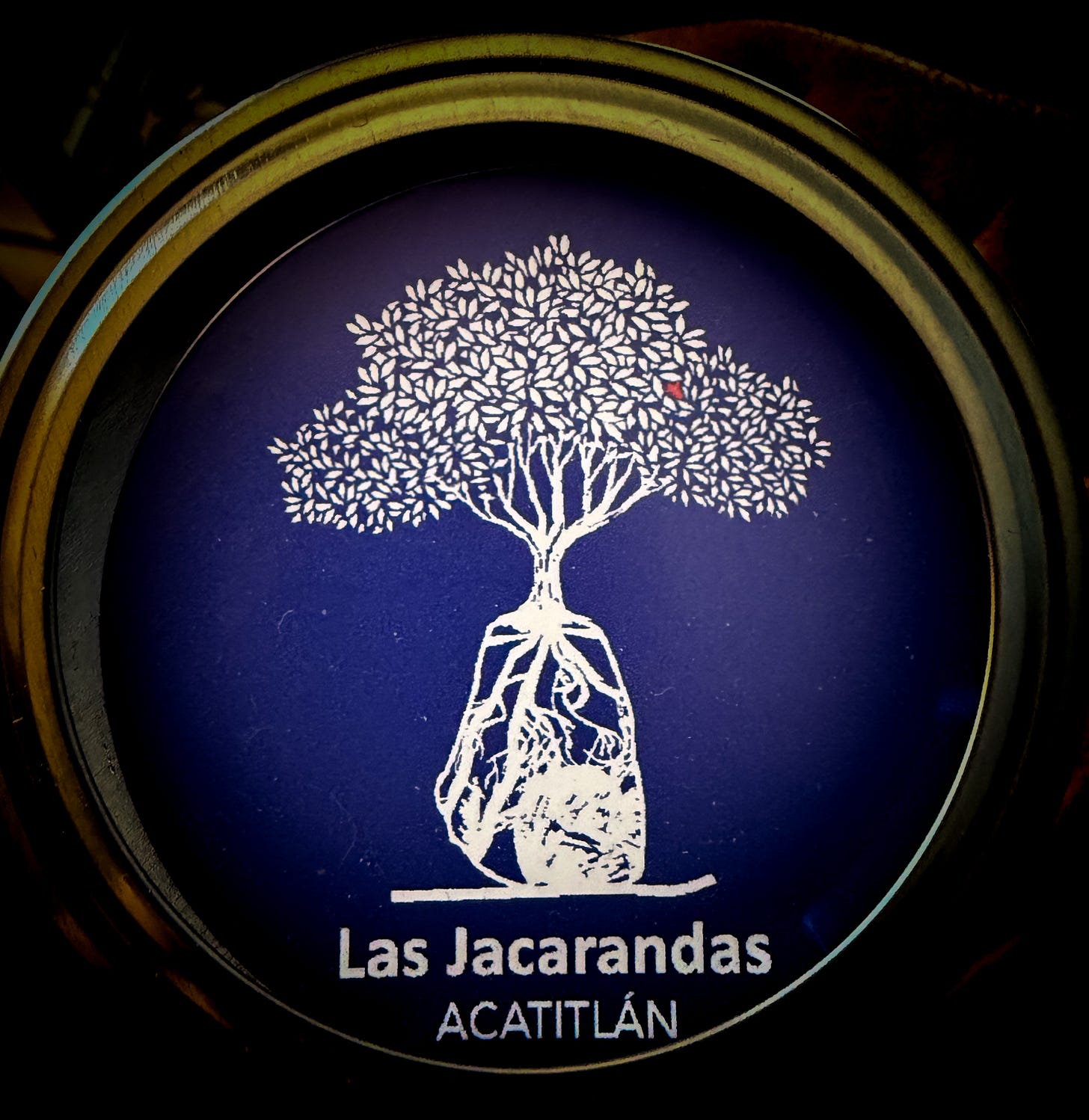
He saves the abandoned Cadillac for last. It all began as a 70th birthday gift to himself, a 1953 Cadillac he is in the process of restoring. This is also a Caddy of the same year, a “sibling” car bought at first for its spare parts—until he had the idea to recreate a Cadillac he had seen several times on motorcycle trips from Mexico to the Pacific Northwest of the United States. As he describes it, “The abandoned relic was wildy adorned with towering trees that sprouted from within decades ago, while ferns and moss enhanced the wild, abandoned look. A crooked, makeshift sign nearby read ‘Rust in Peace. The fate of this second Caddy is to rust away in Acatitlán. I planted two trees that now grow from a hole in the floor right through the windshield. I plan to lather the car with yogurt to promote the growth of moss, ferns and orchids.” You get the sense it matters deeply that the trees grow just right, that the rusted metal frame take on a certain, envisioned look.
As we near the end of our tour and await friends who will drive us into town for a final reunion event, I begin to see why I’m so impressed. These numerous creations, which are deeply personal in nature, seem to me ultimate, authentic and pure acts of artistic invention. There is no desire to share them with the world, for the general public to witness them and applaud. They are simply things he and his wife have constructed as a way of expressing themselves more fully, more emphatically. For some reason, I think of cave art, those ochre-colored representations of important events and moments that human beings long ago felt a deep, pure need to express. In Australia, rock drawings are found in the most remote of places and are often painstakingly constructed—perhaps for no one in particular, perhaps just because the person standing there millennia ago felt the need to create something of their own, to leave their mark, then step back and look and find joy in what they had made.
Juancho and Doris have created a magical oasis for themselves in the high mountains outside of Mexico City, where they have artfully found ways to pay deep and profound homage to those they love and to the things that matter most to them in this life. As I drove through the streets of New England upon our return, I paid close attention to people’s properties, square empty lawns, neatly coiffed shrubs and trees often near carbon copies of the house next door or nearby. I drove up my own driveway, and as I often do, admired the way our home sits at the base of a large cliff face of rocks and boulders, some that have tumbled down onto each other, one particular boulder that juts out toward our house where my dearly departed cat, Rocket, loved to sit, front paws together, eyes closed, head tilted back as he took in the sun. And though it was a frigid day, I couldn’t resist going out into my own yard that stands in such contrast to the wild ledge above it and lifting up some stones from the untended stone wall there and starting to stack them into shapes of my own, things to step back from and admire, knowing I had, albeit fleetingly, placed them there, balancing precariously one stone atop another, and another. Small marks of my own.
*All photos by the author.
If you’ve been enjoying my writing, please consider doing any/all of the following:
Help me grow my audience by Sharing this post or my main site with a few people you think might enjoy it as well.
Upgrade your subscription to paid. For only $.14/day, you can help me continue to devote the many hours I do each week to writing, editing and promoting this page.
JourneyCasts is a reader-supported publication. To receive new posts and support my work, consider becoming a free or paid subscriber.
You can also help a lot by making a one-time contribution at any time by “buying me a coffee” (or two). And certainly a good amount of real coffee has gone into the making of JourneyCasts.
As always, I encourage you to leave a comment.
Be sure to check out my podcast, “Hemingway, Word for Word.”




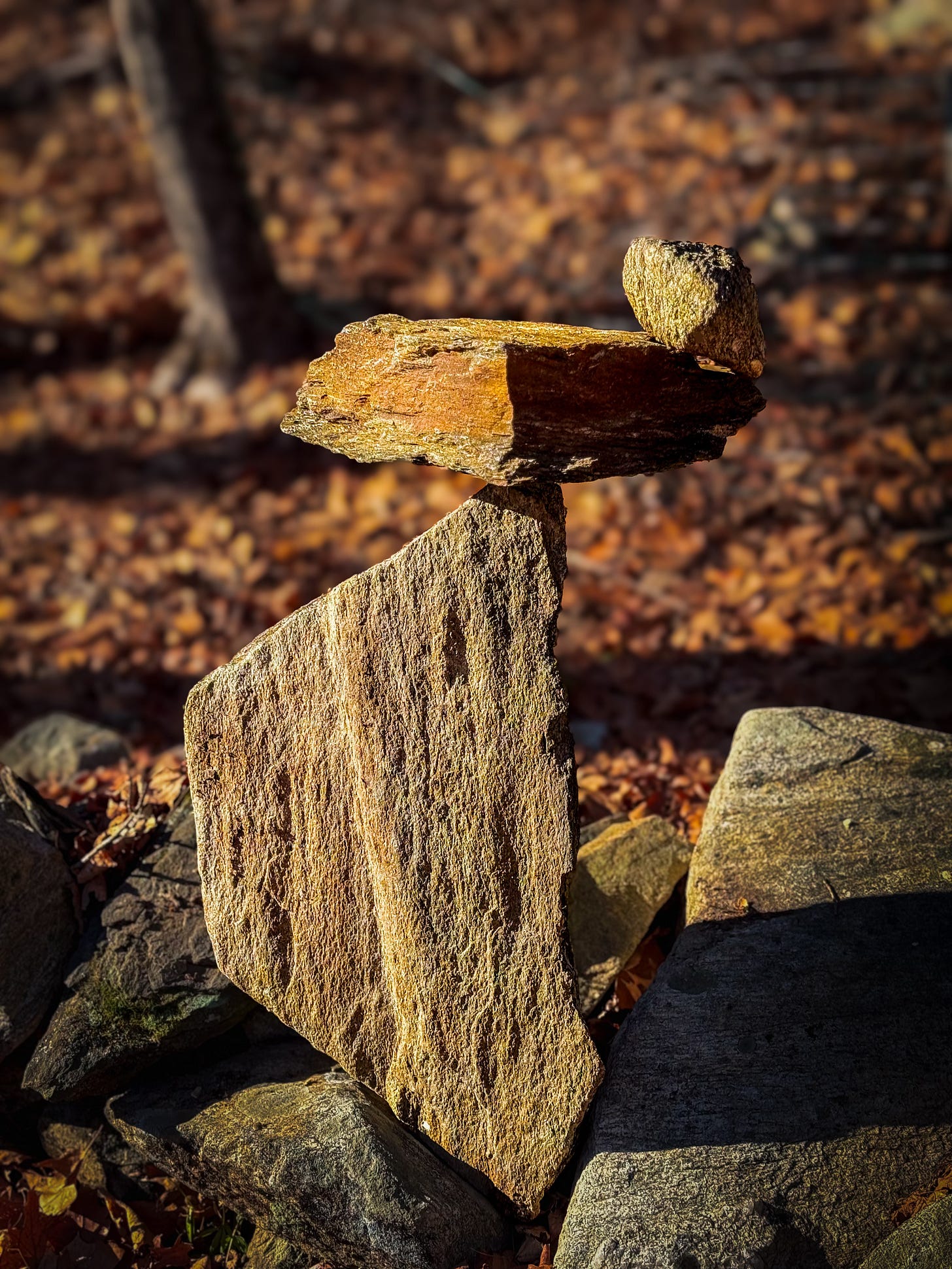
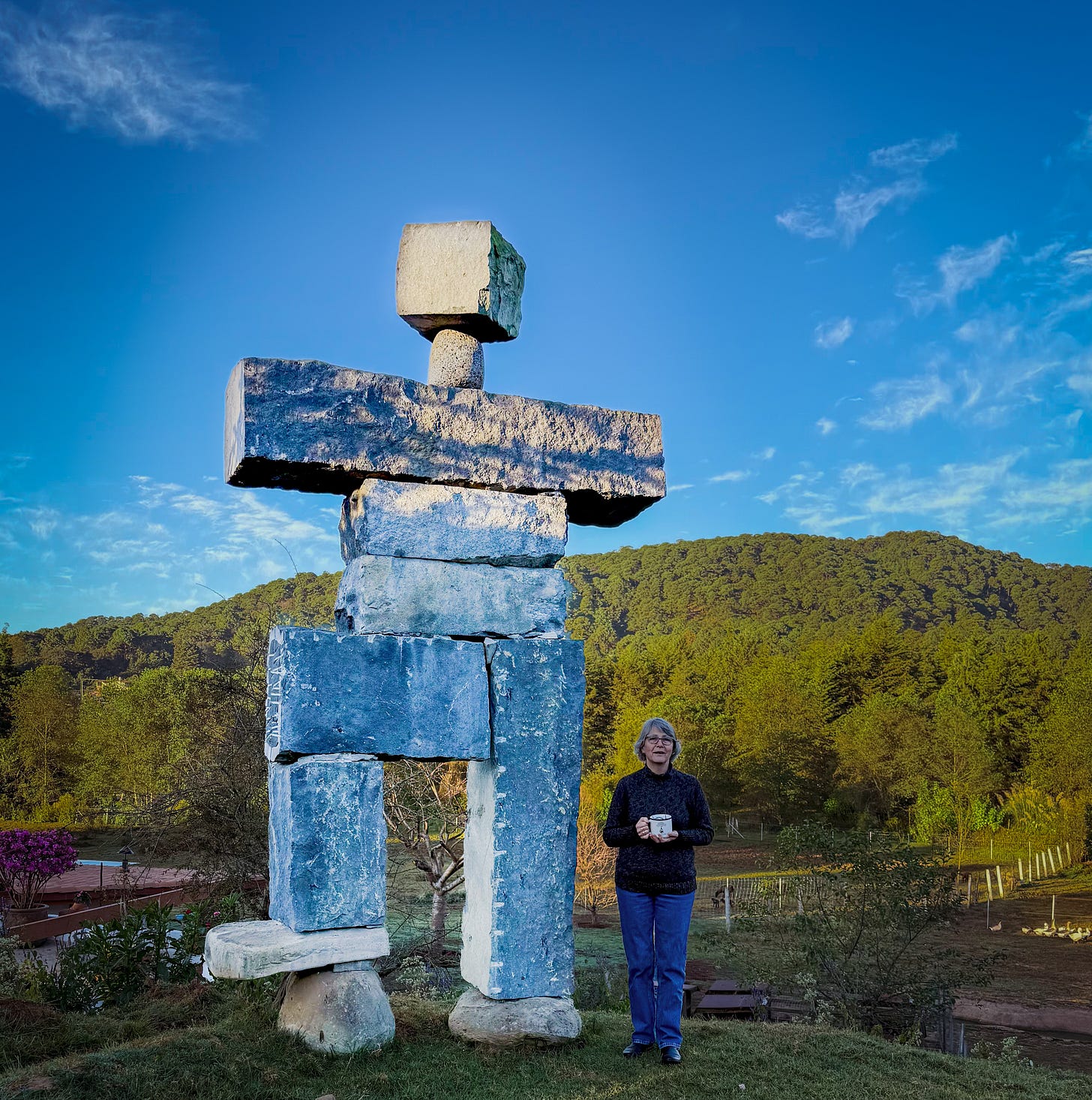
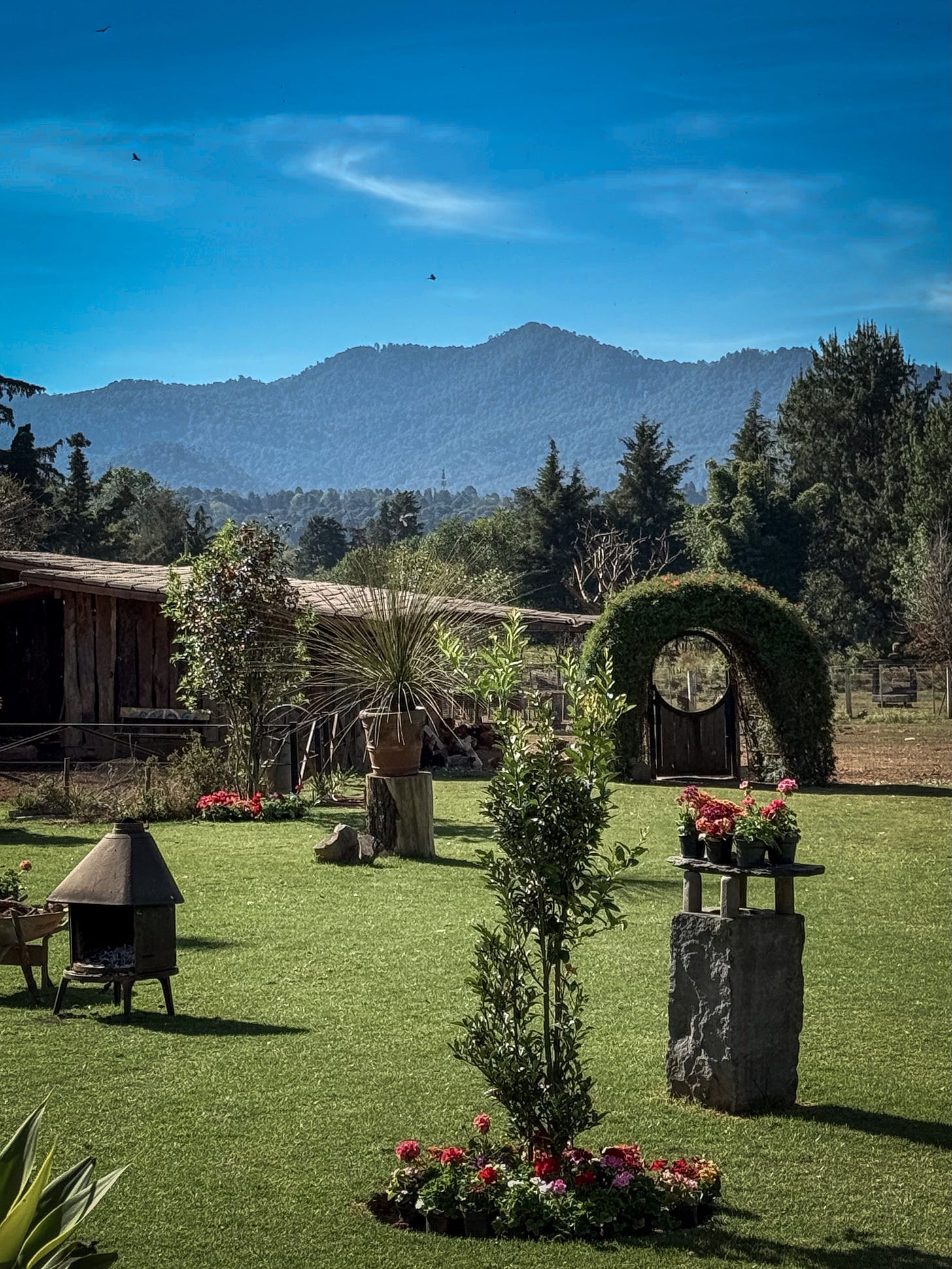
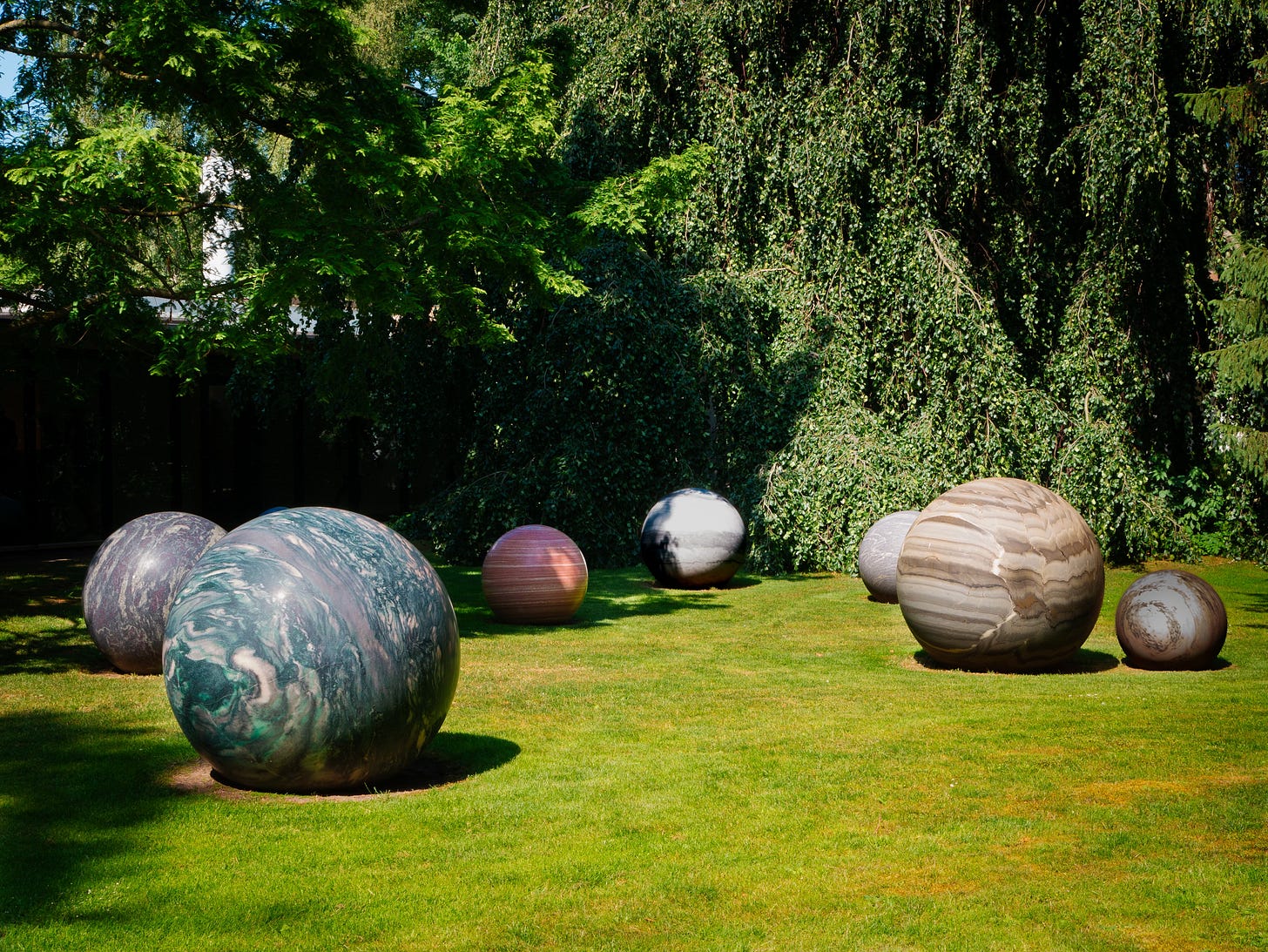
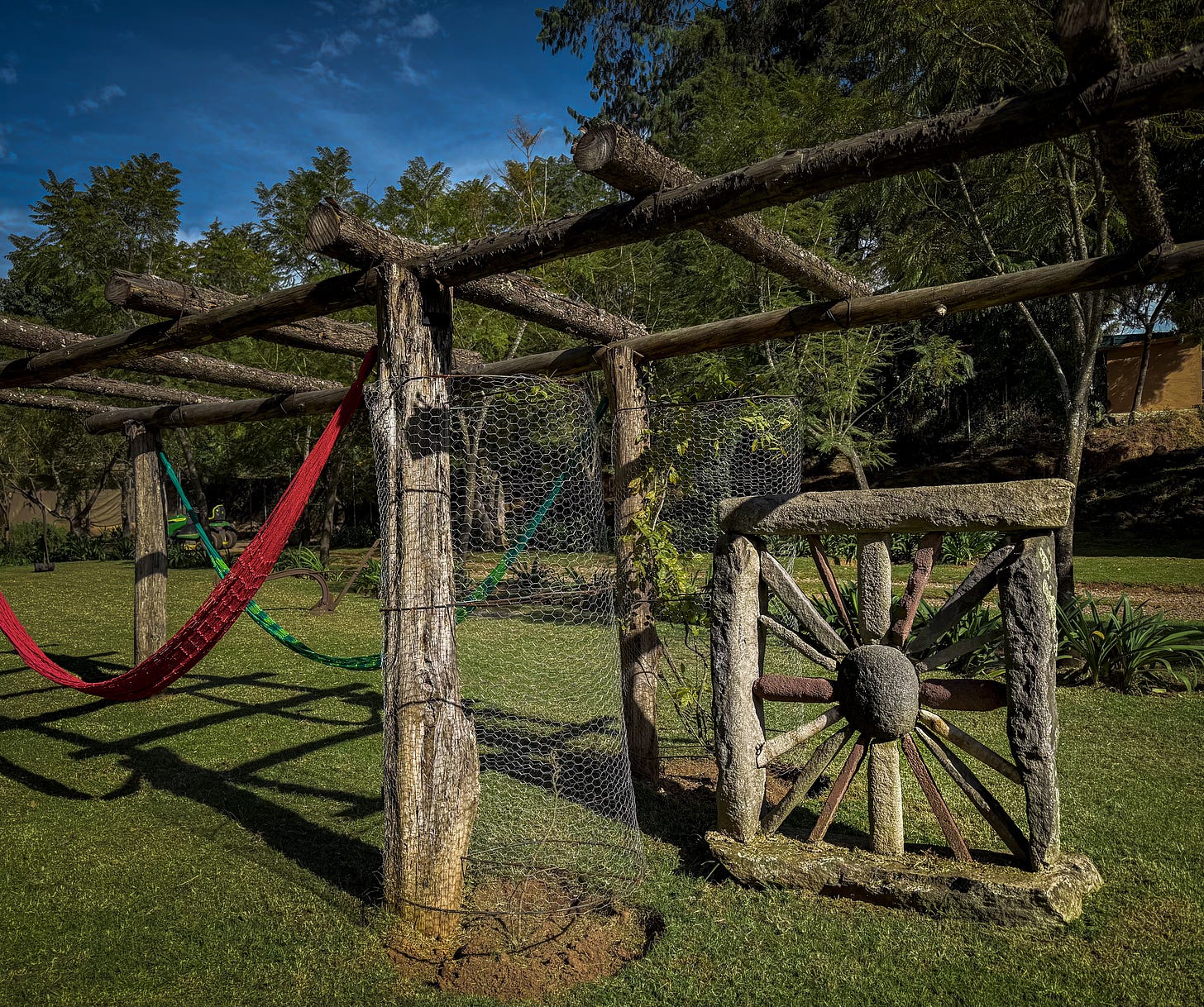
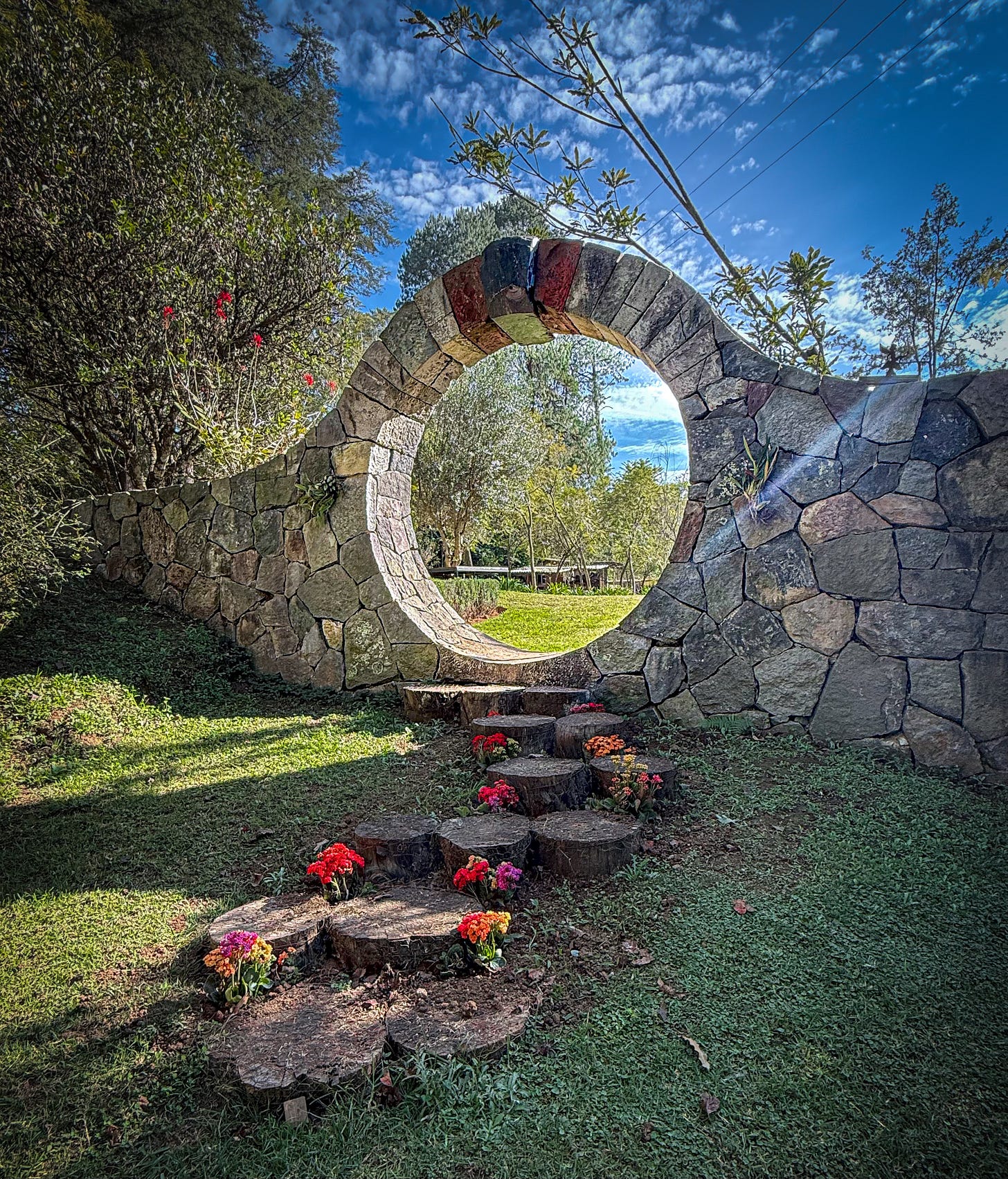
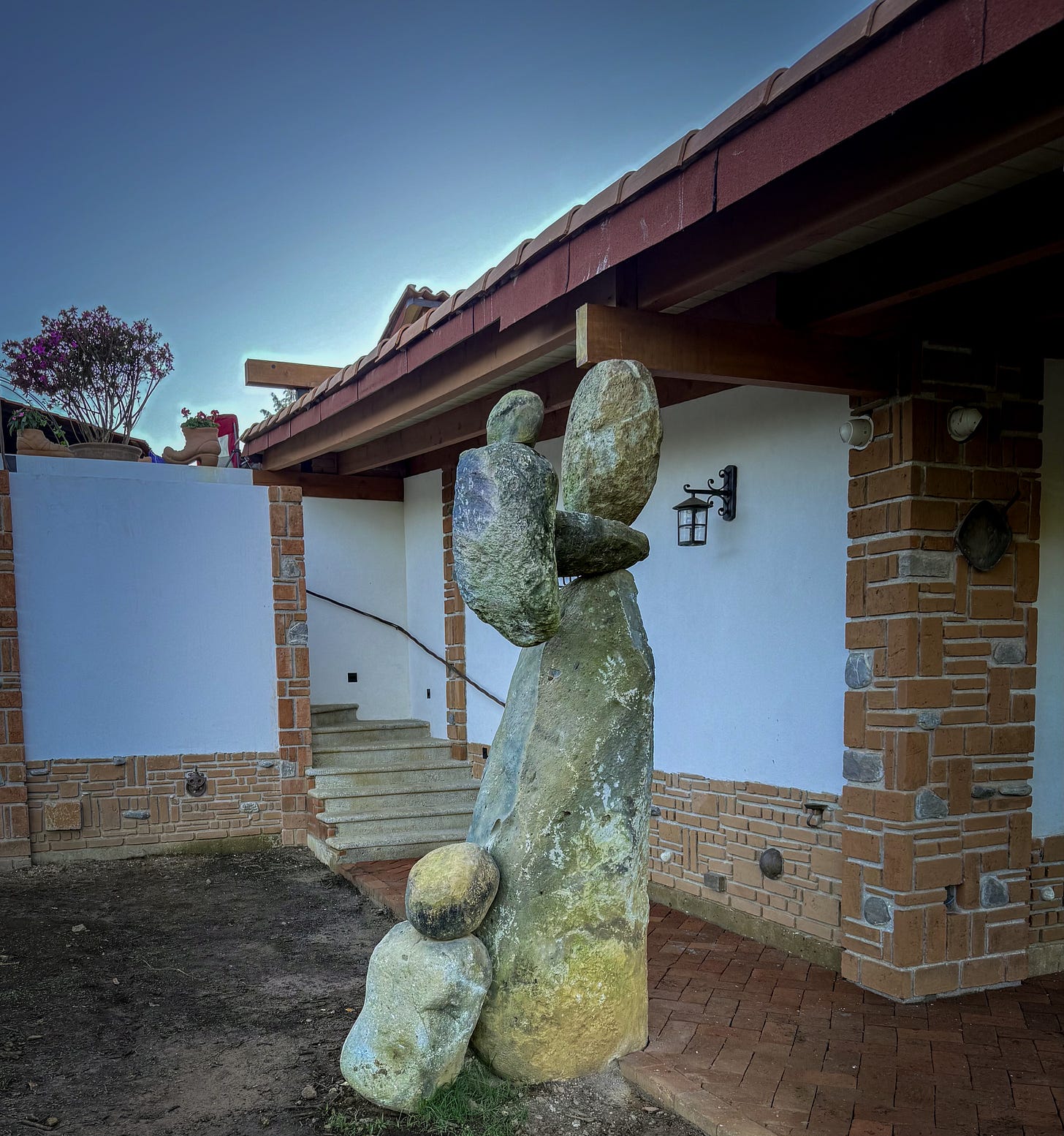
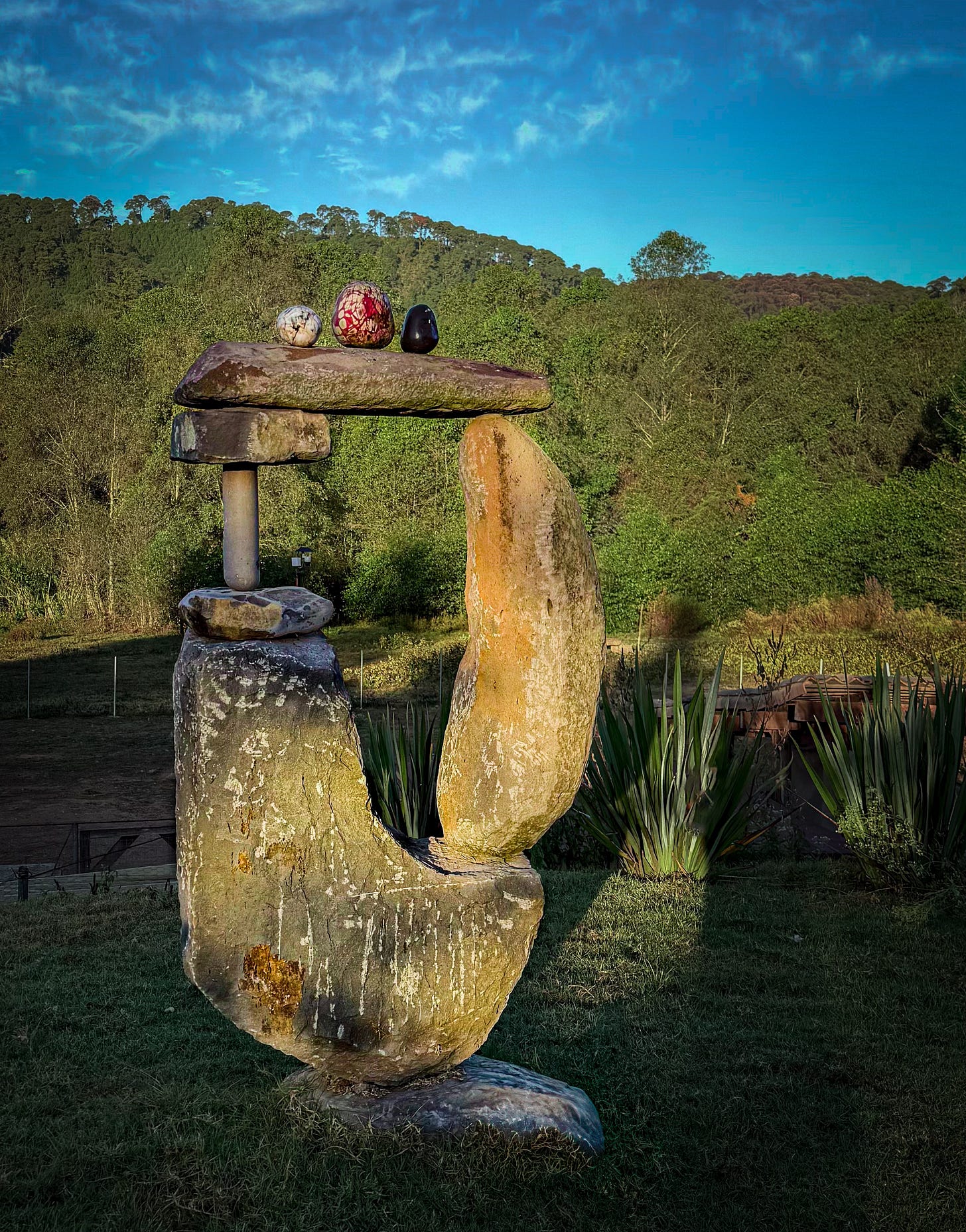
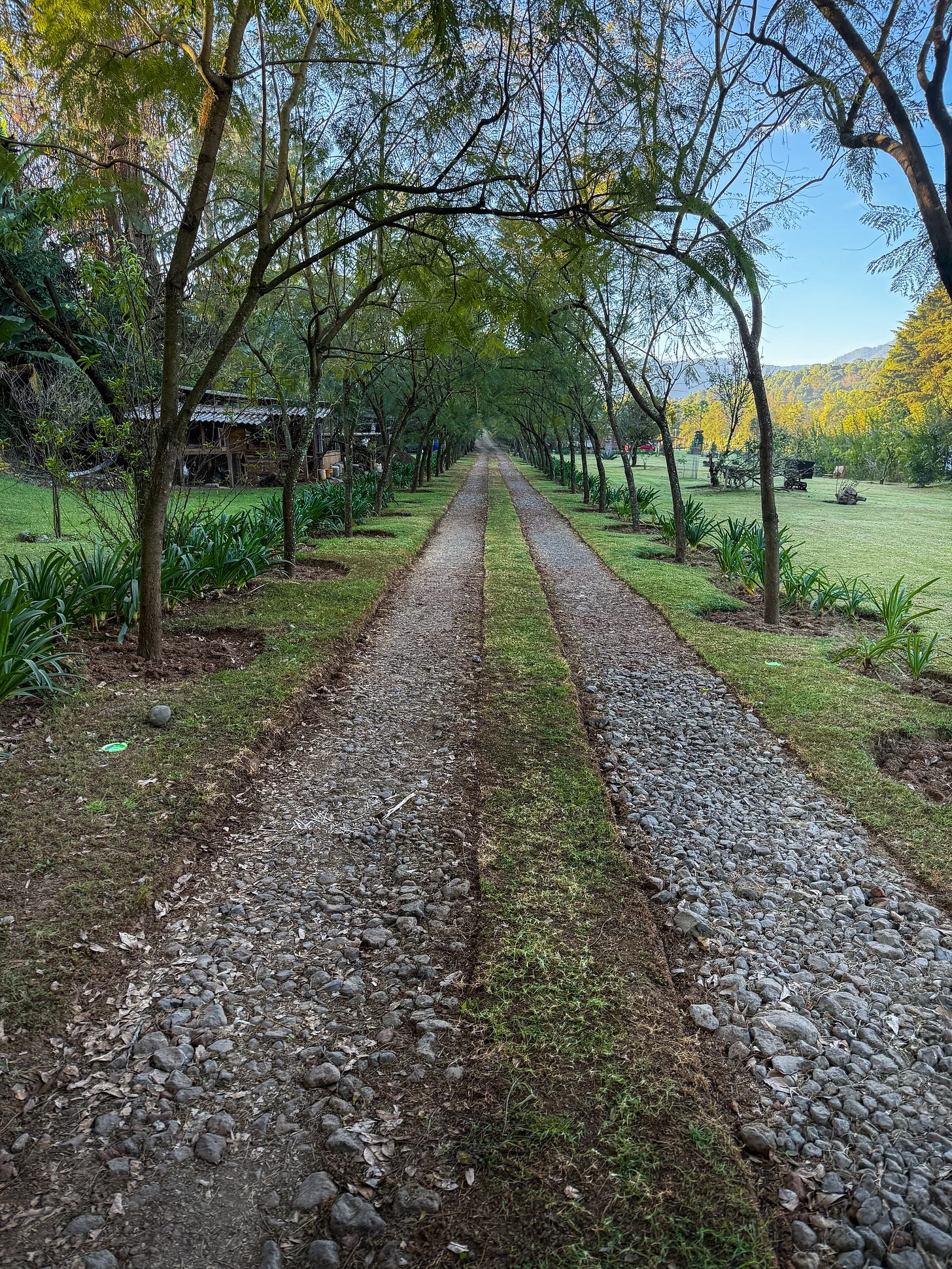
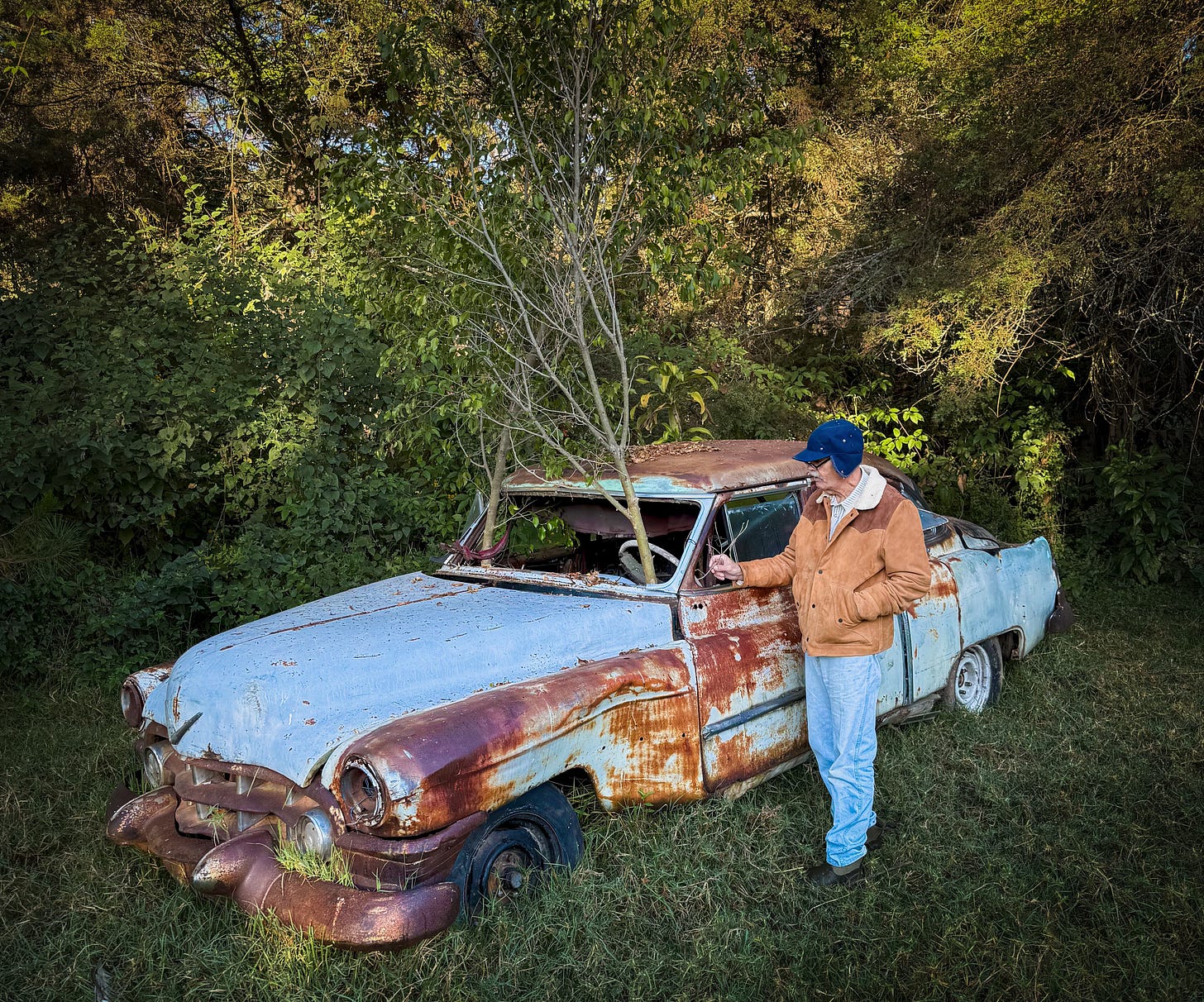
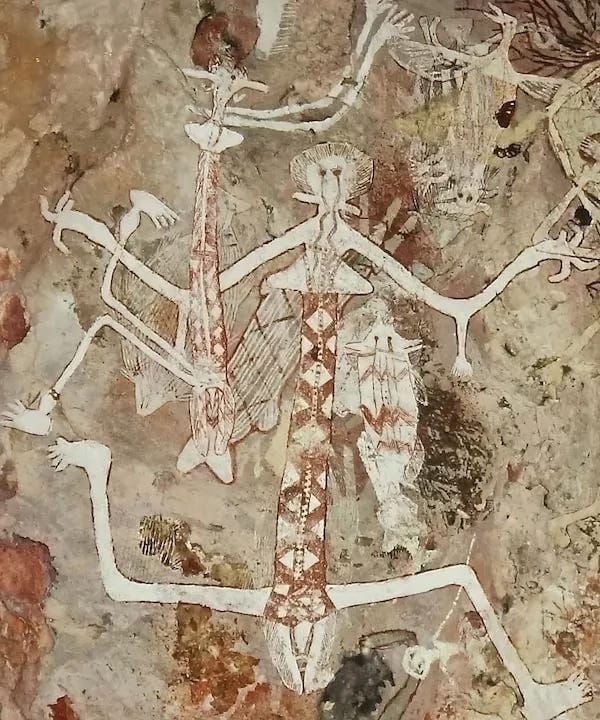
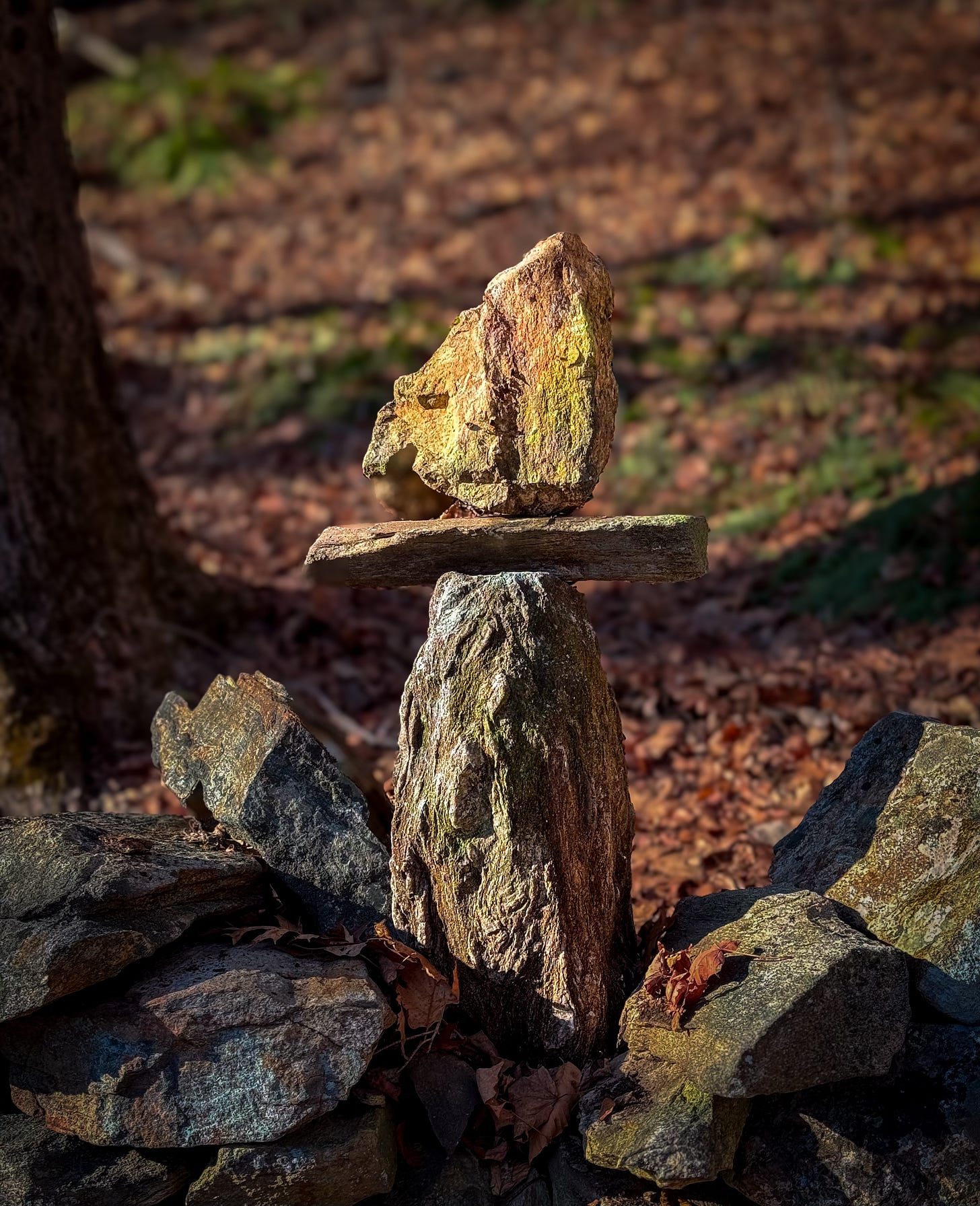
Hola 👋
I just now read “ Leaving your mark “ and was moved, as always, by your masterful handling of the endlessly expressive English language ( when it’s in the right hands, claro:)
I identified with many of the details of your visit to Juancho’s earthly paradise…and I have lived all my life with the same organic approach to art, differentiating less and less between art making and plain living. I could spend a whole day telling you how that approach has fed my life and art. Maybe I l’ll give you a shorter version of it someday…
One particular note:
I have precisely the same notion that you and Juancho share about the importance of making art even if it’s not universally known. The process and the resulting artwork ( for me, painting and, most essentially, songwriting ) are the point. It’s through that process that I begin to unravel the mystery of existence, mine and the world’s.
I love that you returned home and began to create your own stone totems. This March, I will once again extend my own search for identity in a studio in Joshua Tree, thrilled with and surprised by my most recent music, grateful for my musical friends who will lend their hearts and talents to it. All I have just said indicates how fortunate I am to navigate this life with this attitude, instilled in me by parents, friends, mentors, sages, artists…What a gift they gave me!
The references to Dali’s home in Port Lligat brought those personal memories back to me…My wandering through that house while it was still a home, past the taxidermied bear holding binoculars and walking canes, down labyrinthian walkways and bridges to the pool and patio and the view of the bay and the elemental white egg…and to the artist and his wife who made that world.
It seems that you and I have been blessed many times over. Good to remember as we confront the chaos and literal madness of the current world.
Keep on keepin’ on, cuate :)
What an enchanting home and how inspiring. I love the notion of creating for ourselves, whether anyone hears, sees or reads or not. To make is enough. Love it.